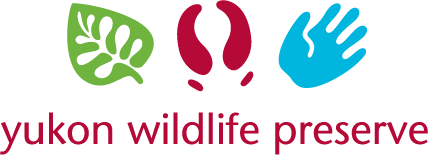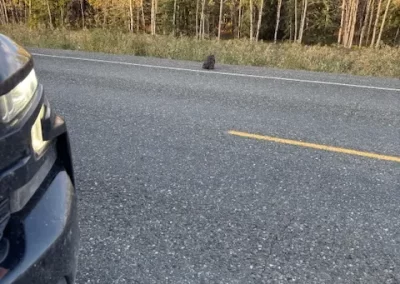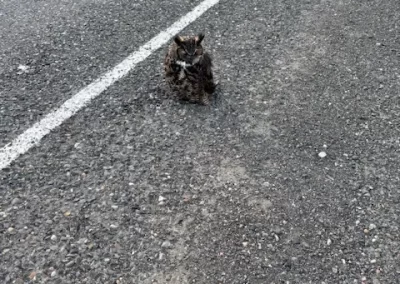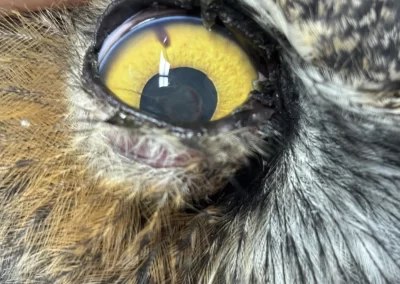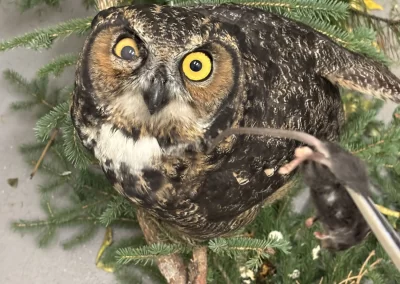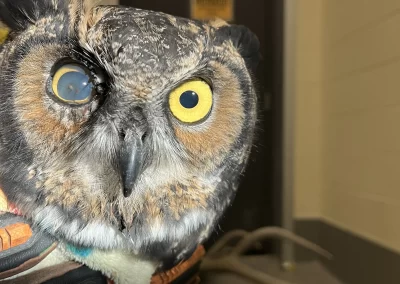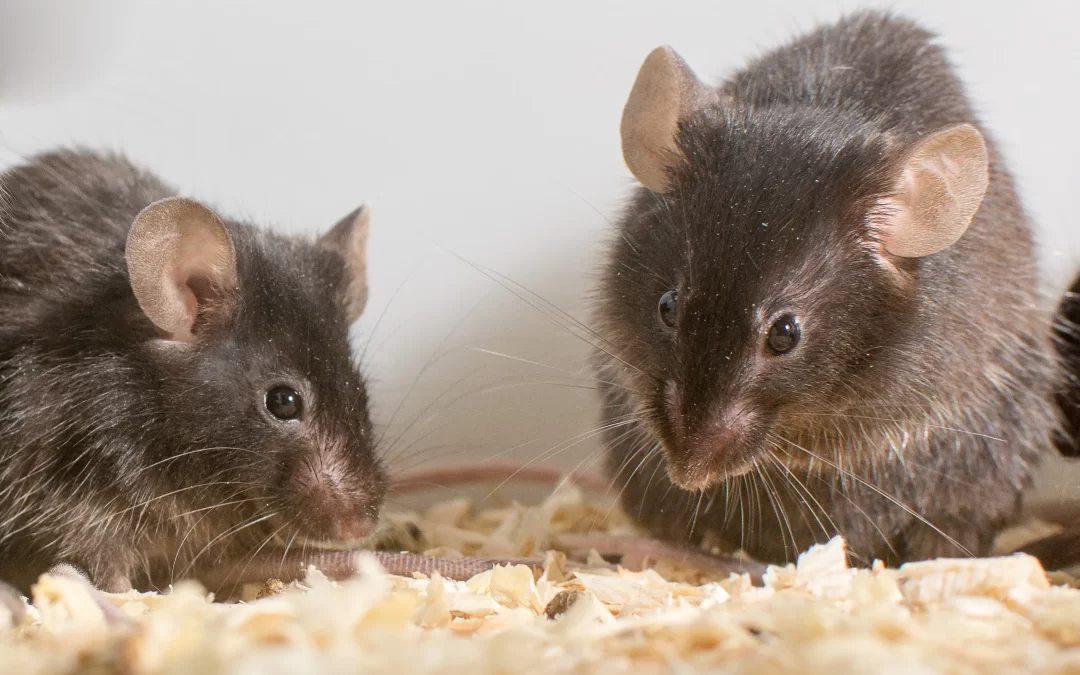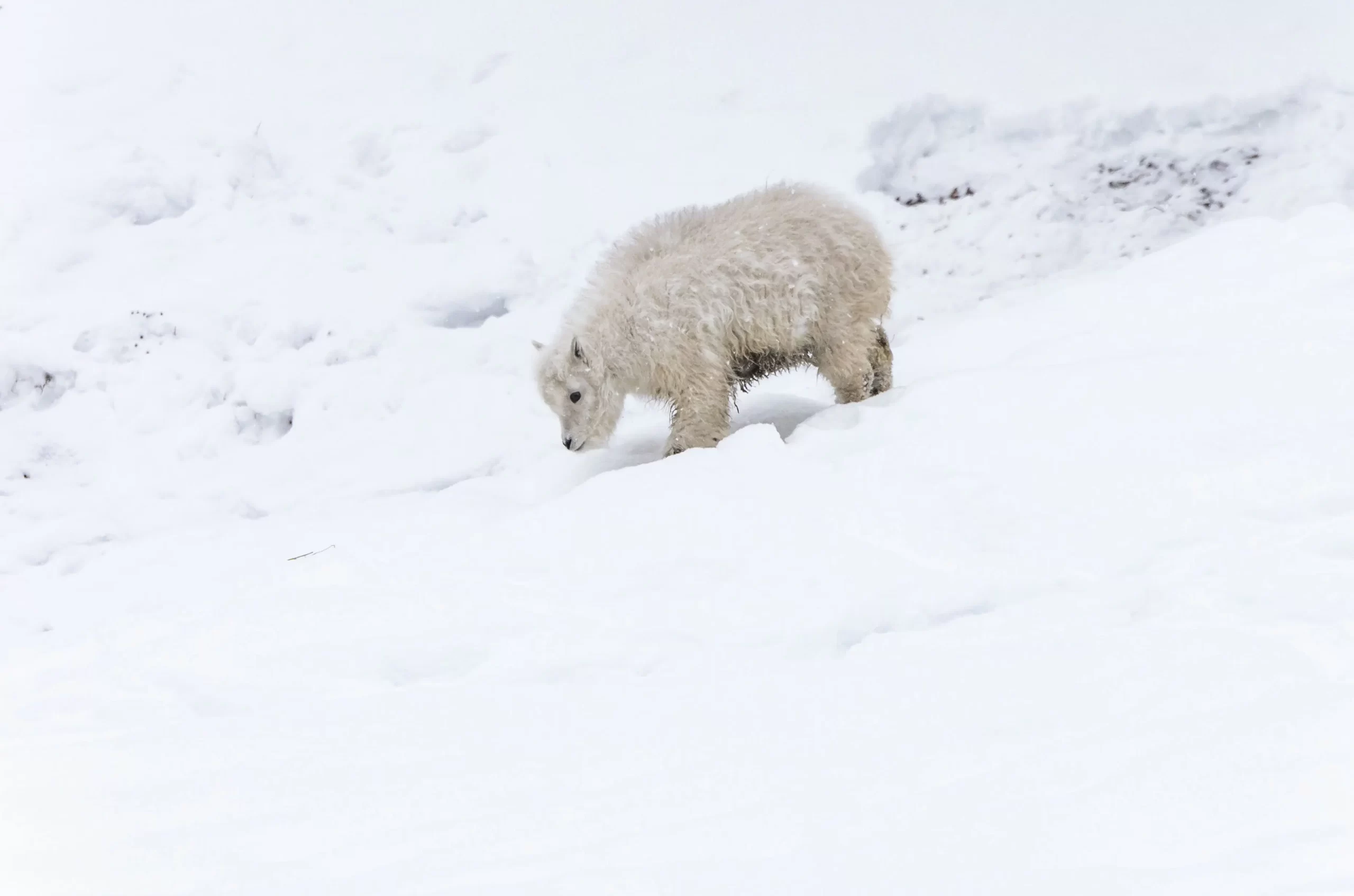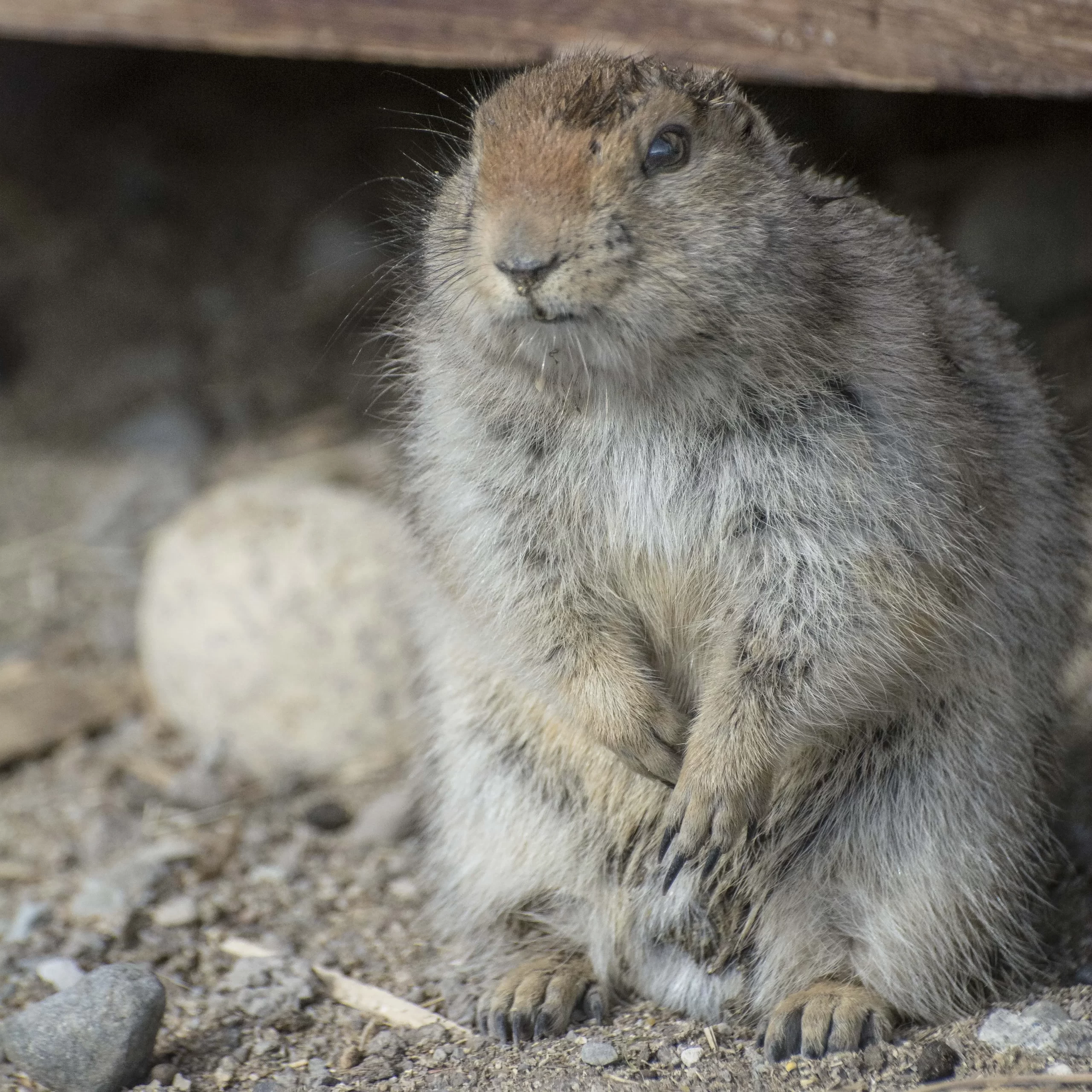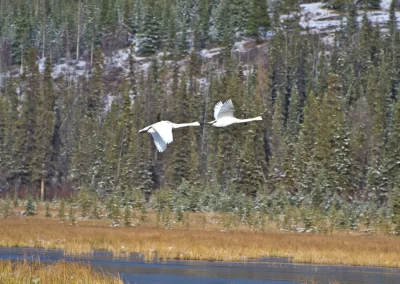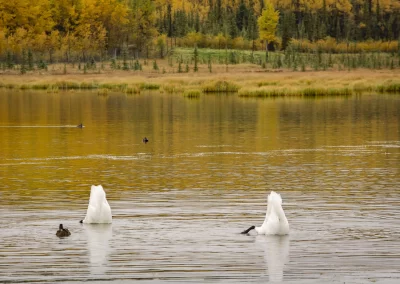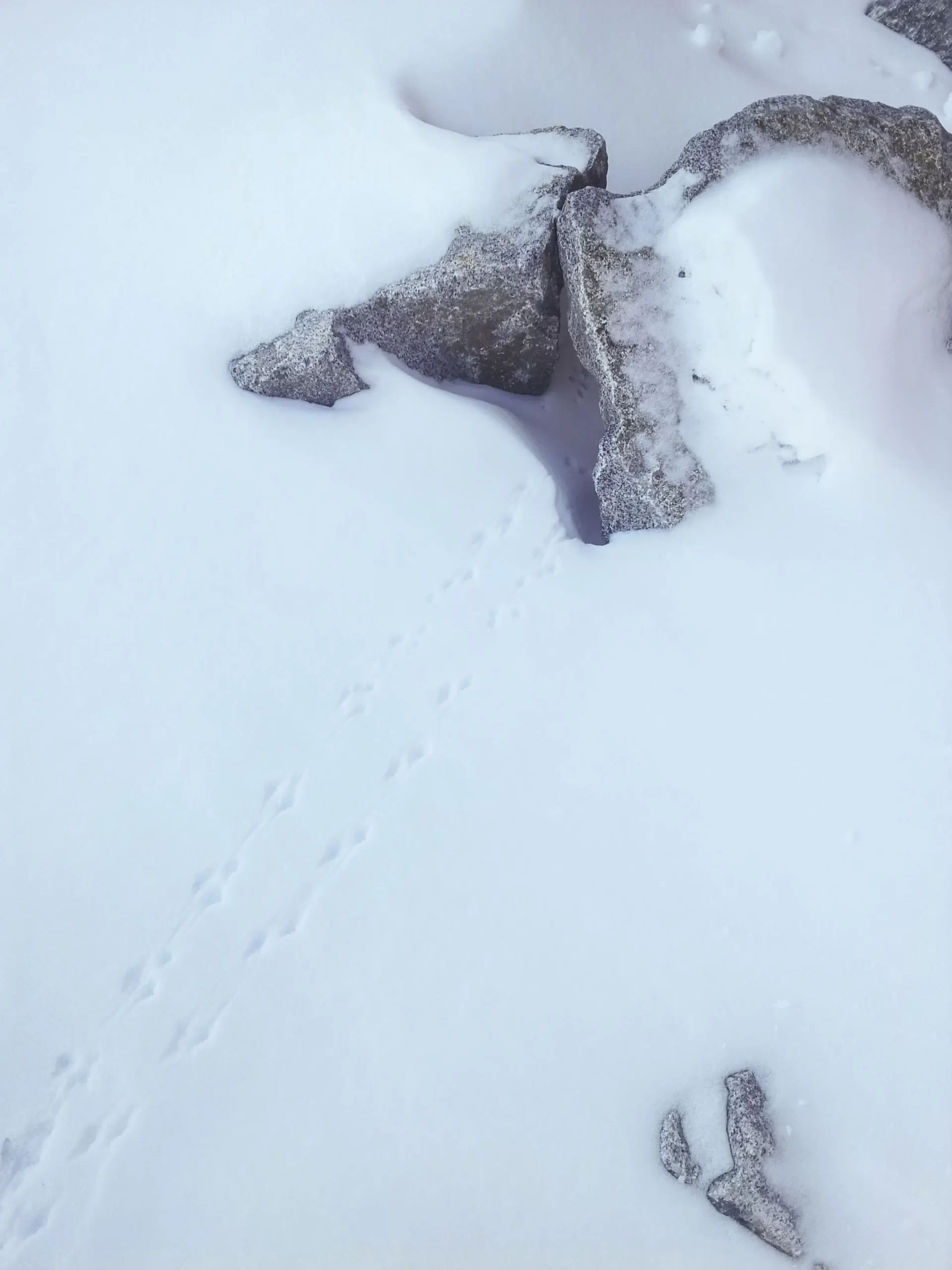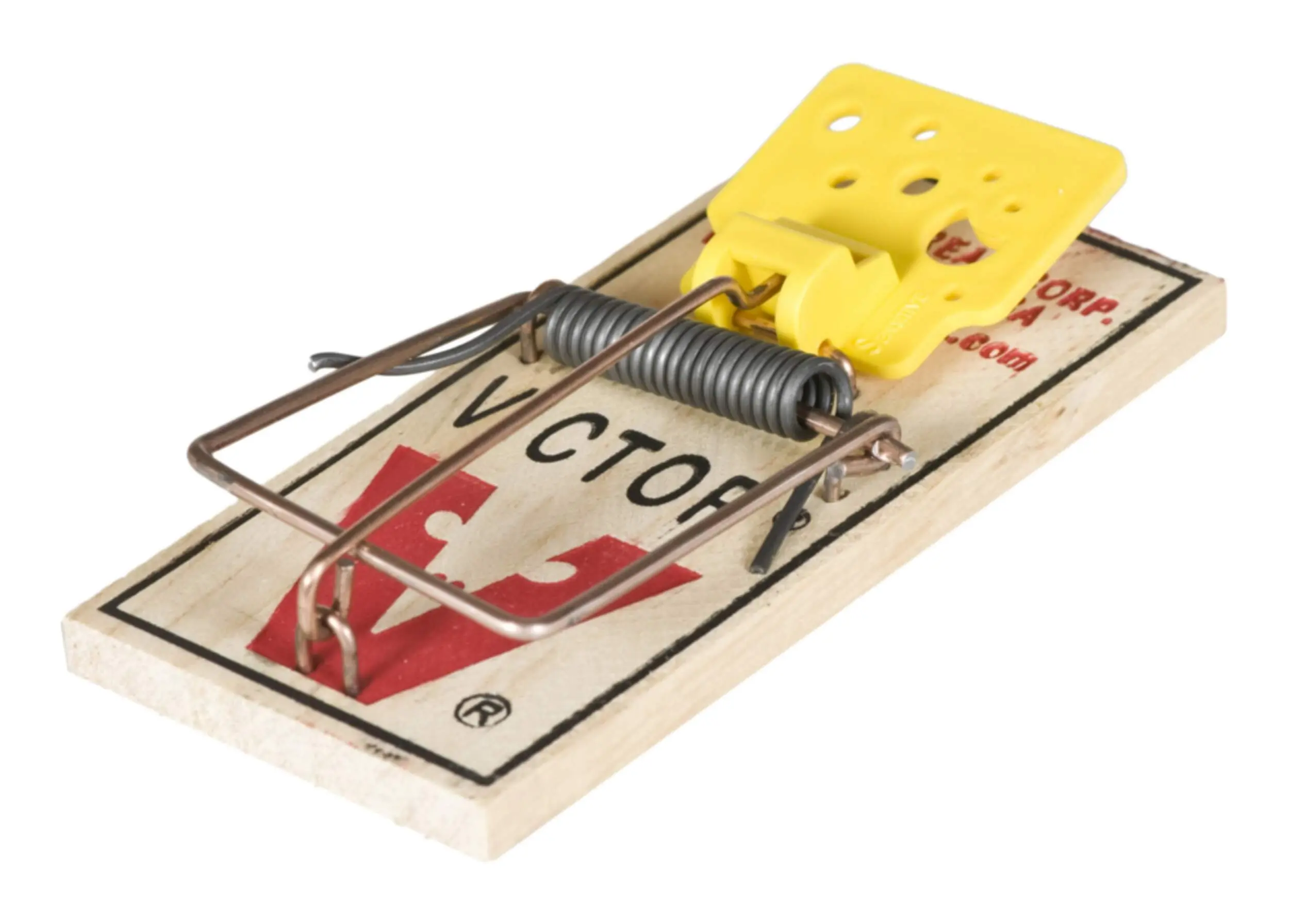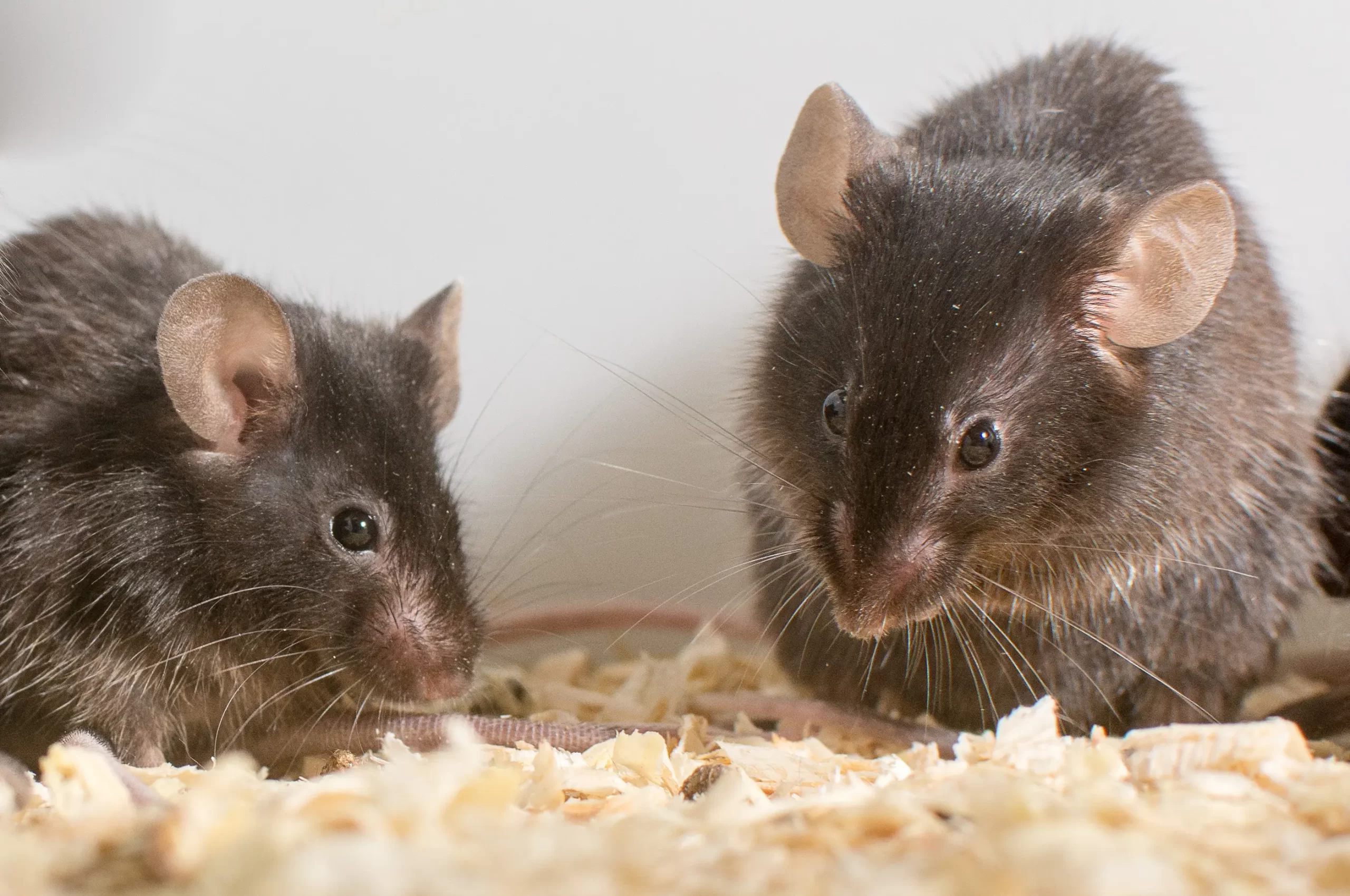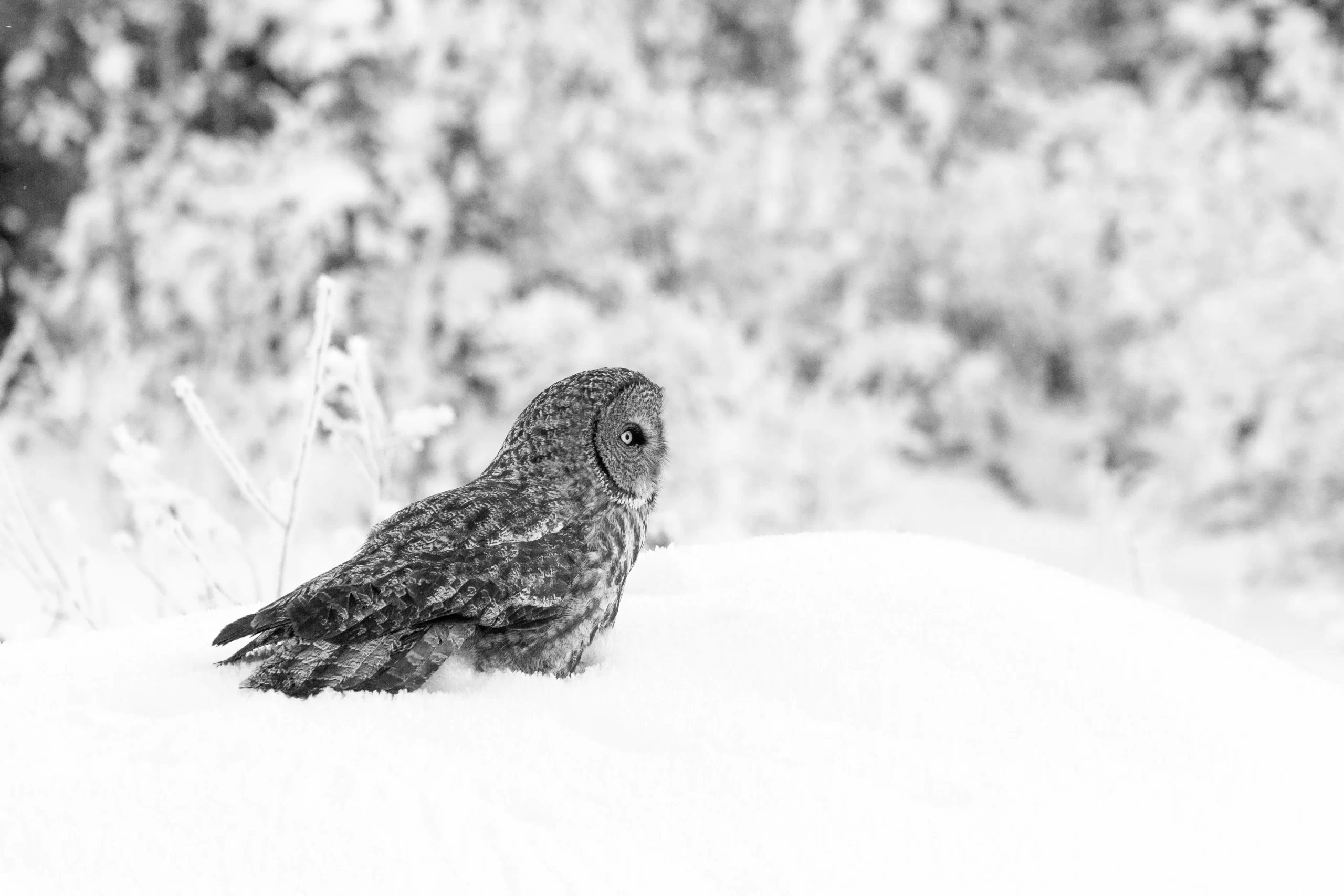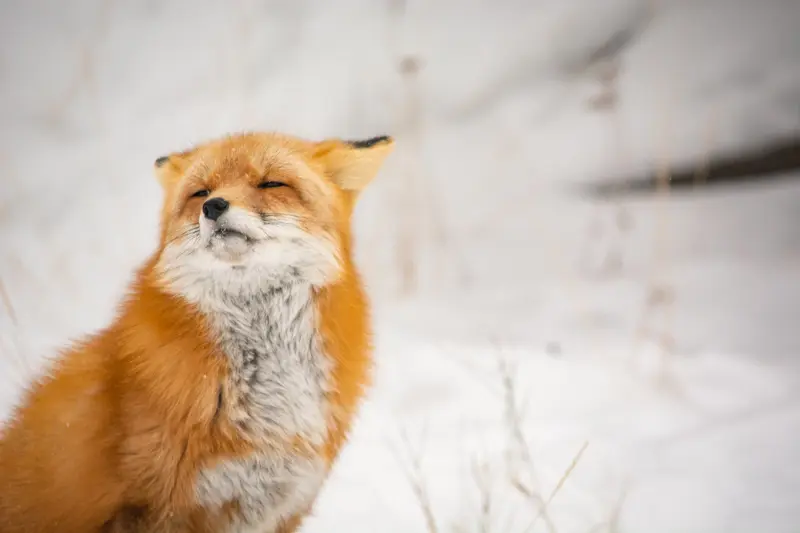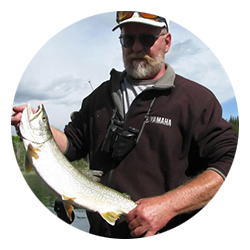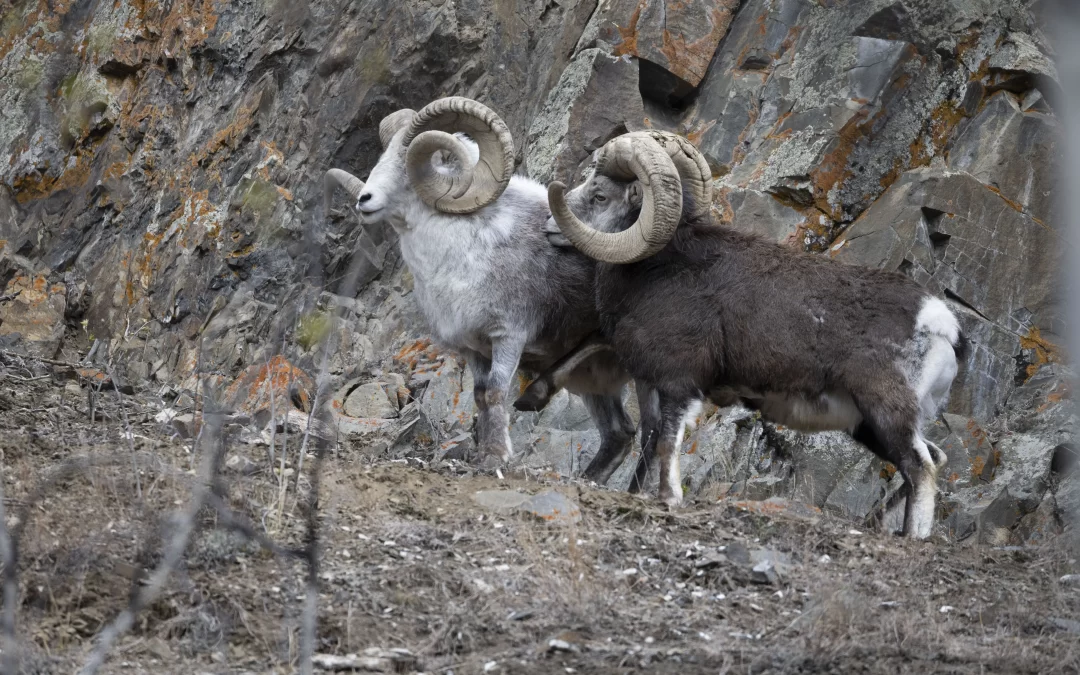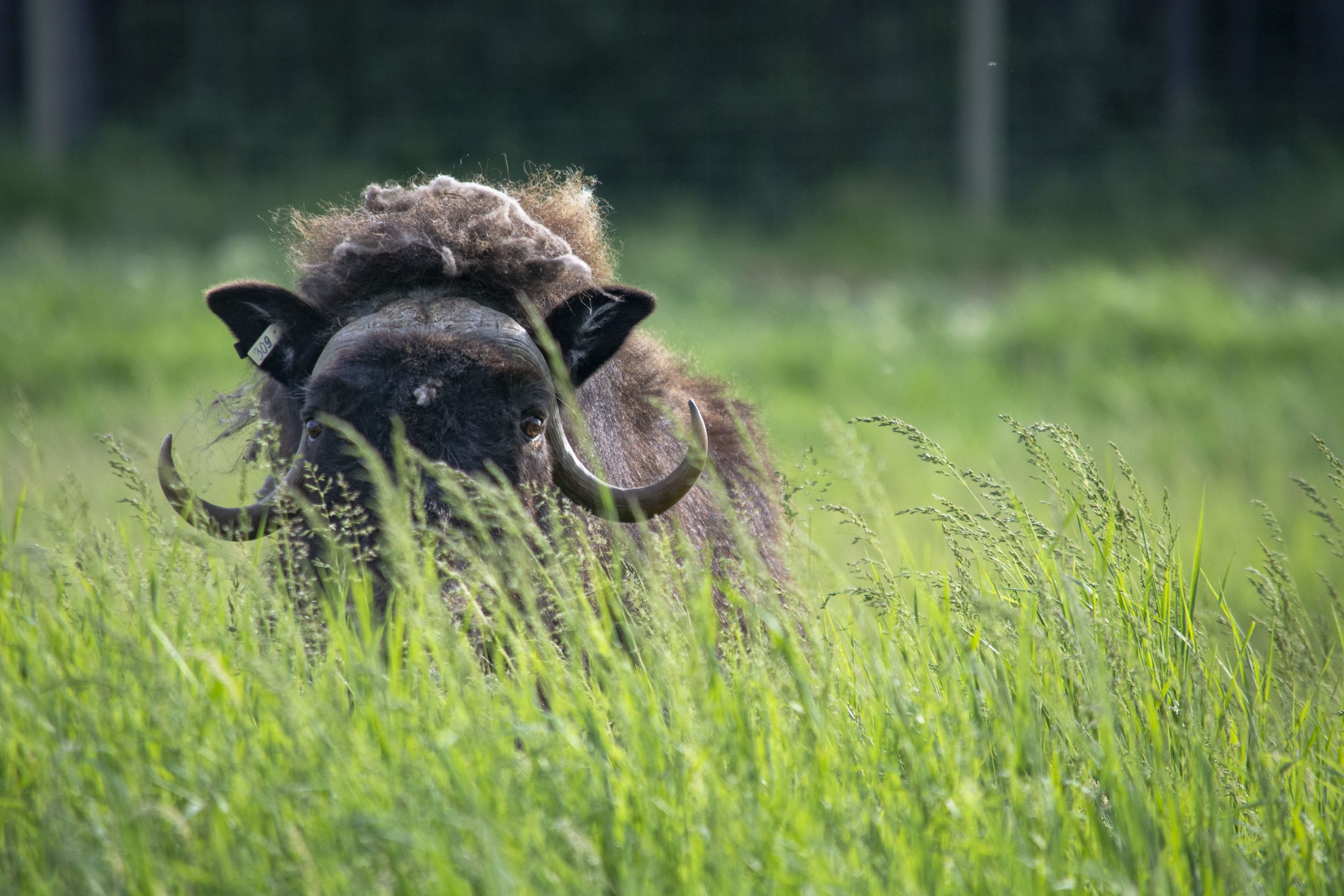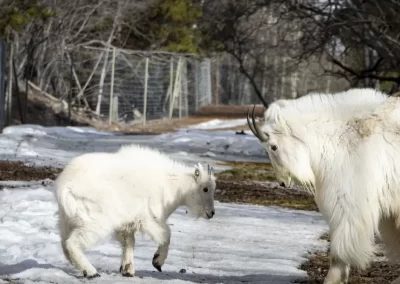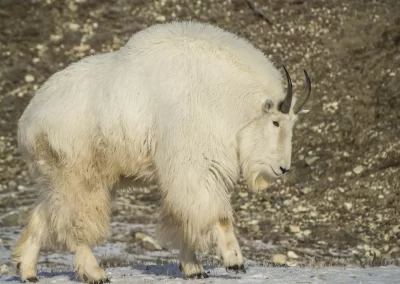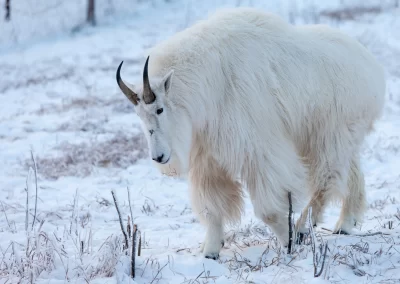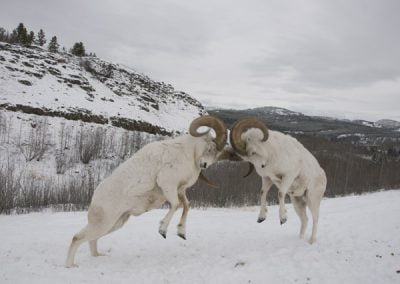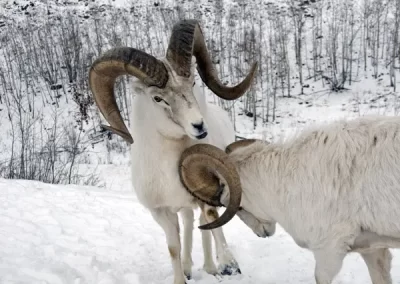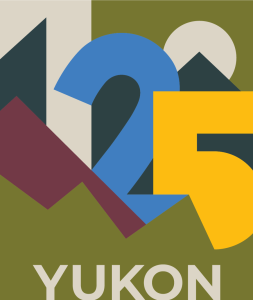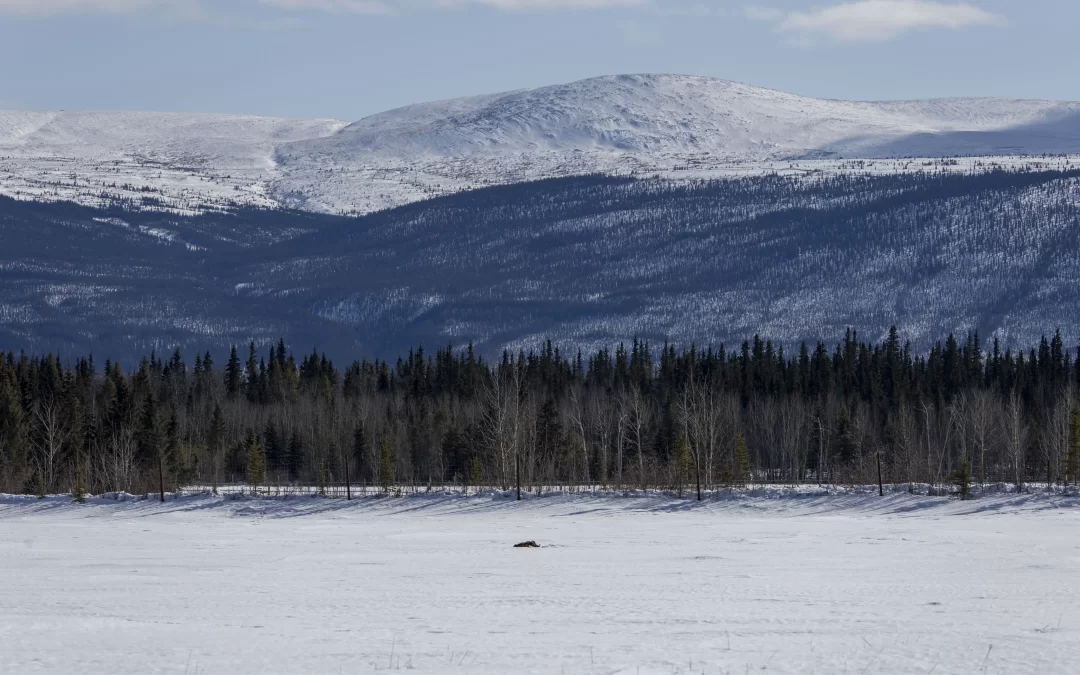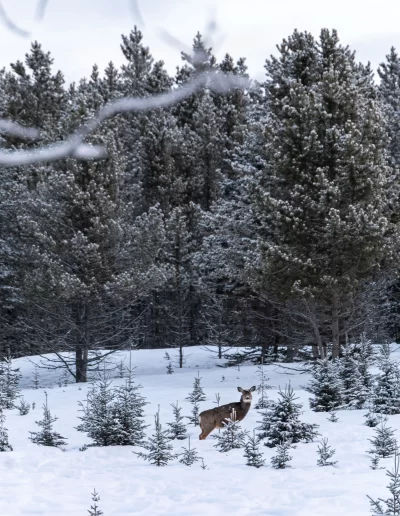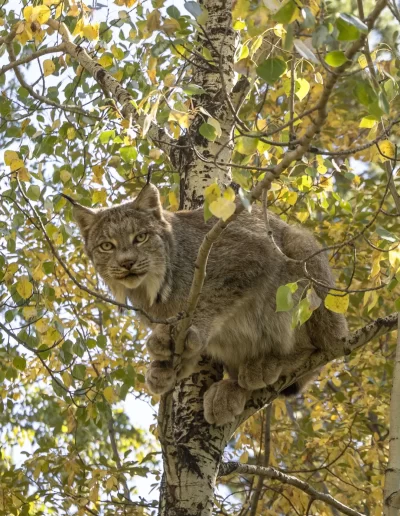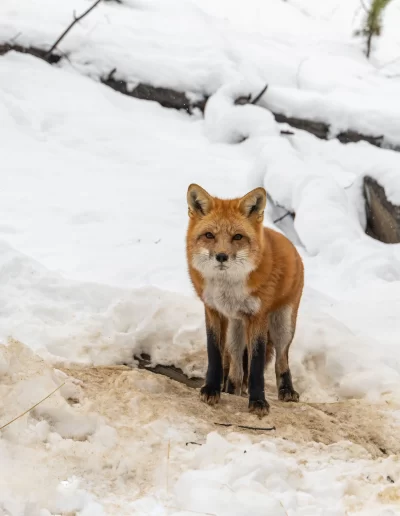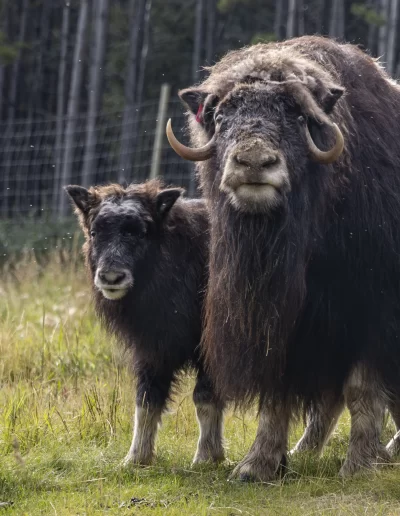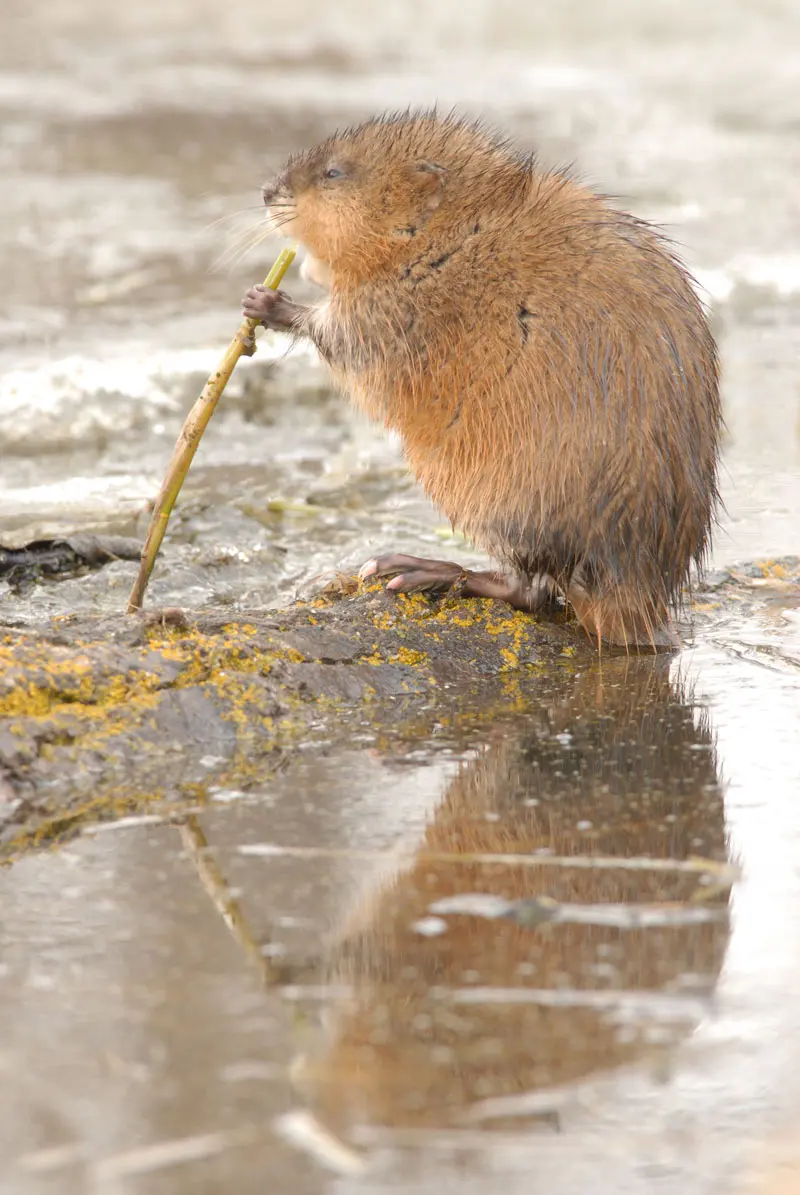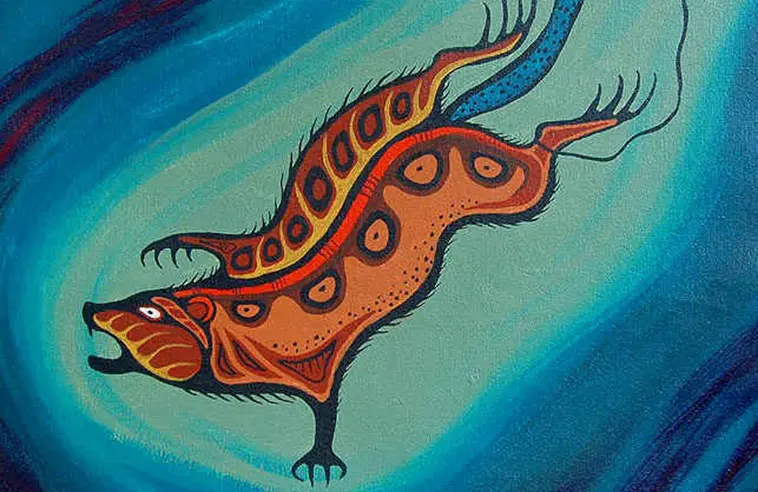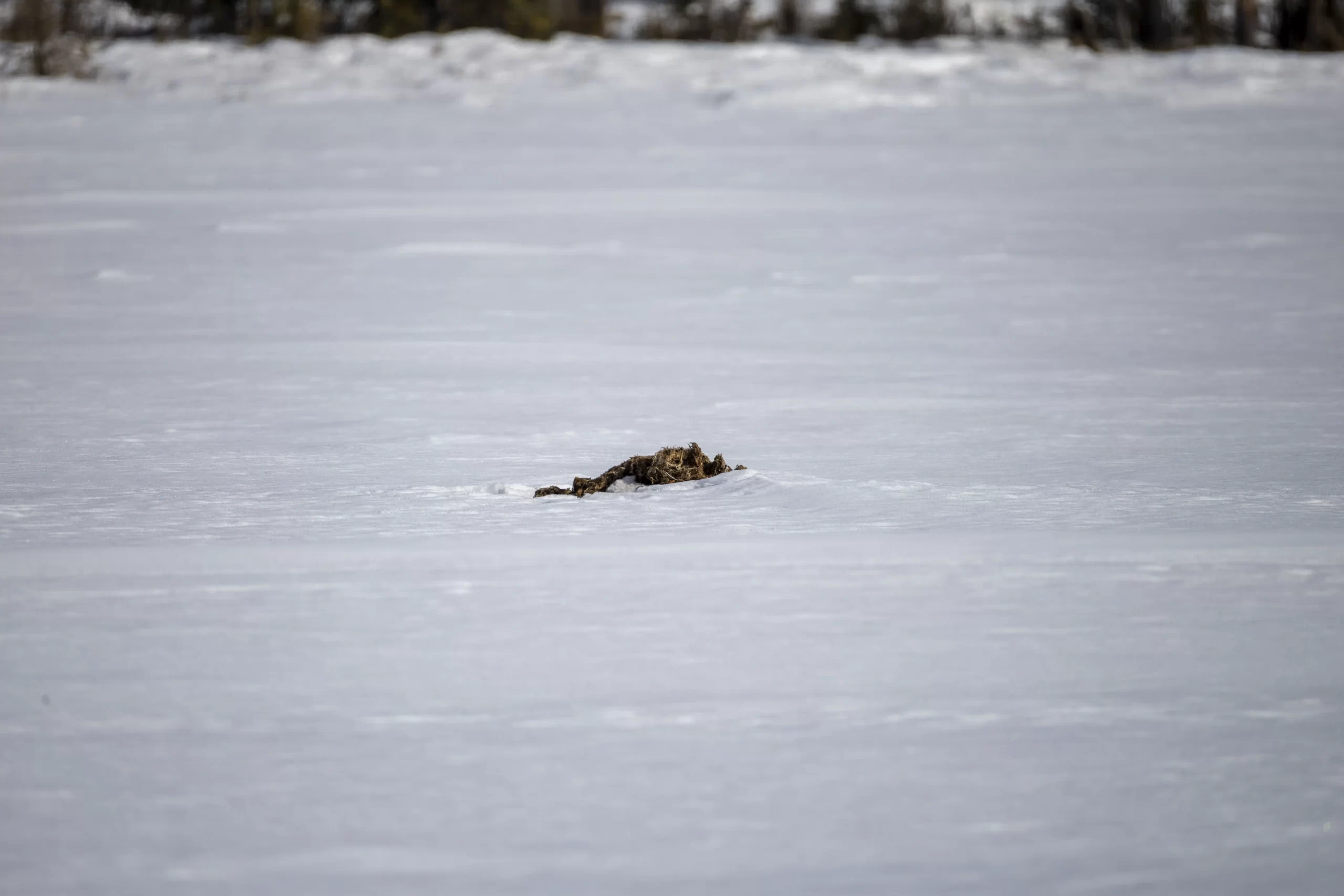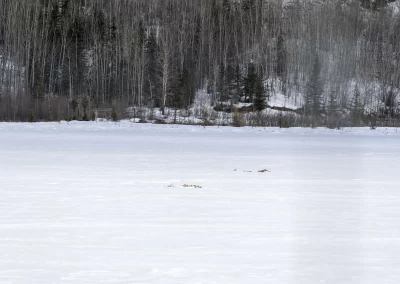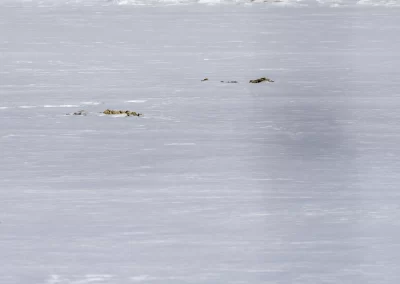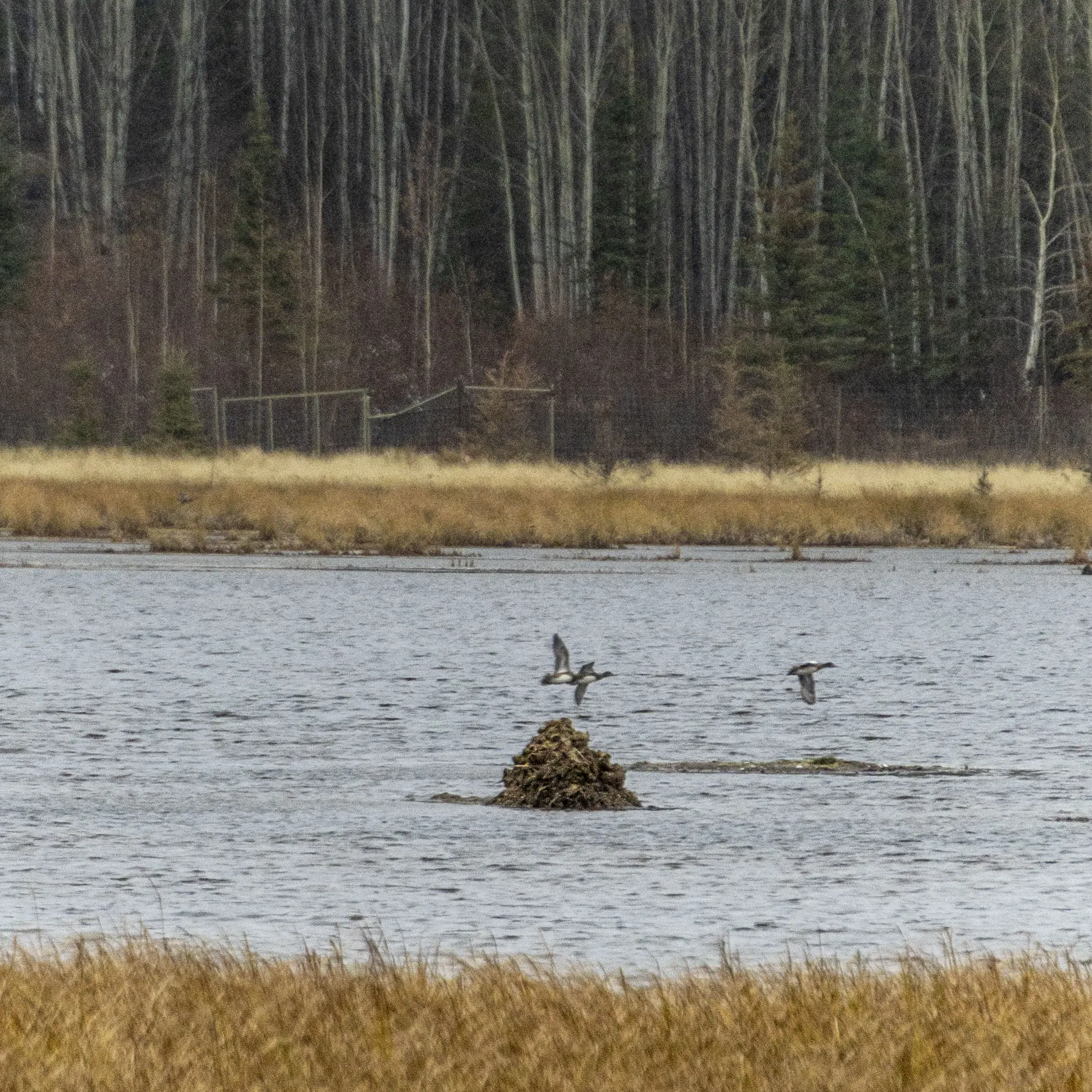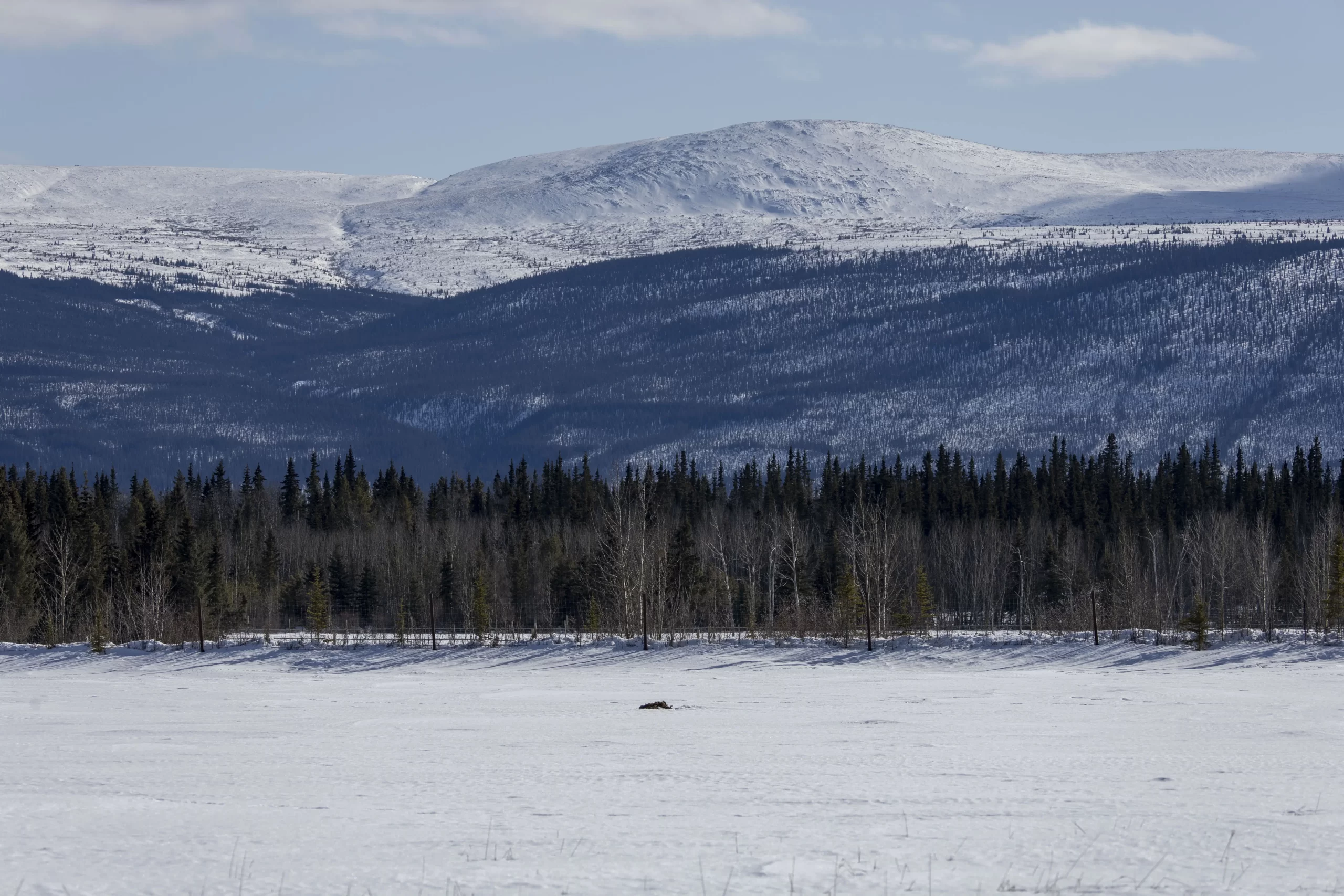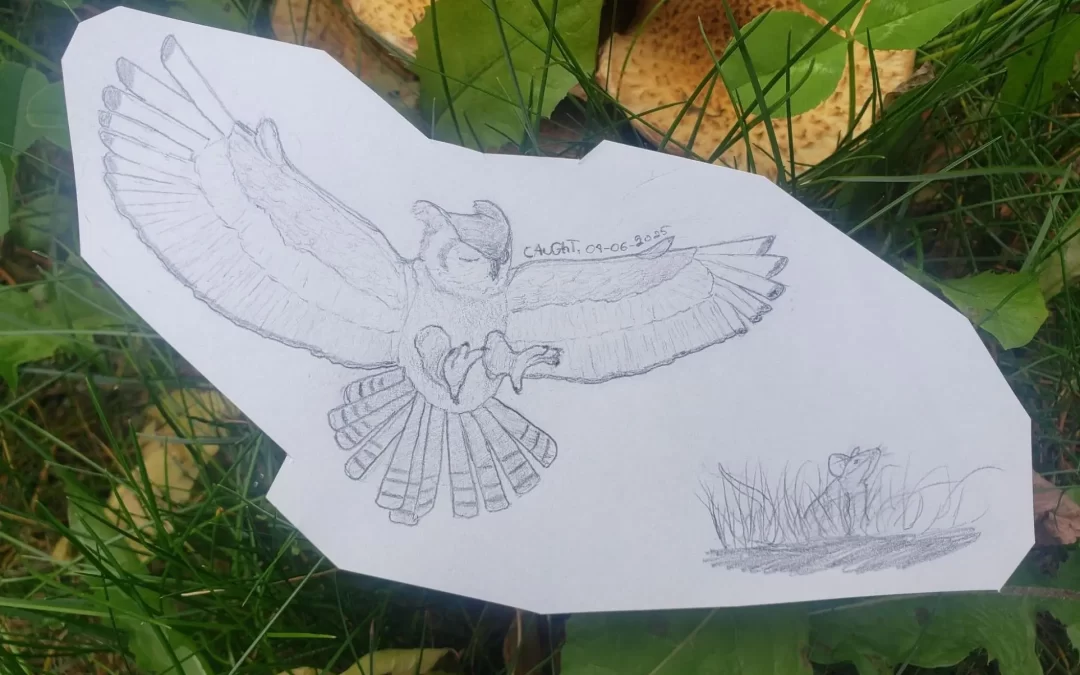
The Patience of a One-Eyed Owl
The Patience of a One-Eyed Owl
6 – 8 minute read
It is dusk turning to night, with darkness enveloping the forest. Stationed in a tree on the side of a road hides a predator, whose yellow eyes reflect with the passing headlights of cars driving by. This owl is currently listening, not only to the engines of vehicles and the sounds of gravel being kicked into the air, but for tiny rustling in the underbrush across this treacherous path.

The ‘great horns’ on this owl are not their ears; instead, they have an opening on both sides of their head to take in the sounds bouncing off the facial disc of feathers around their face. One of these openings is slightly higher on their skull, allowing for the sounds of this noisy prey to enter one ear a fraction of a second faster than the other. As this owl twists their head, they finally pinpoint the location of their prey, following with their eyes to the exact location the creature is hiding. As they zone in and begin to take flight, all sounds except for the scurrying prey begin to fade. The great horned owl narrows its eyes on their target, taking in the flow of air around their silent wings whilst beginning the slight movements they need to grasp with their talons.
All of a sudden, in this brief moment of time, a life is imperiled; a flash of light enters the owl’s vision from their right side and the world goes blacker than the night they surround themselves in.
The road is a deadly location for many animals; vehicles can collide with wildlife passing through, garbage and trash commonly finds itself on its side, and carnivores often use these areas to hunt those animals taking advantage of the weedy species growing in abundance. Not only do predators hunt those in the underbrush, but they also find themselves on the sides of roads waiting for foolish prey to cross the area with no cover.

This photo captures another rehabilitated and released great horned owl at the Yukon Wildlife Preserve. It highlights how roadways provide convenient hunting grounds for owls that perch where the forest and our roadways meet. Photo credit: B. Forsythe
A great horned owl that has recently entered our rehab center was one such predator. When they were first admitted into our charge, our animal care team was told by rescuer Sonya Bingley that they were struck by a car, north of Braeburn, resulting in difficulty flying and their right eye remaining swollen shut.
Photo by Sonya Bingley. Sonya spotted the owl on the side of the road while driving just North of Braeburn, Mayo/Klondike Hwy, Yukon.
After some brief examinations led by the veterinarians at AlpineVet and initial attempts at feeding, the owl was visually responding to our team’s actions using their left eye, but had a lack of ferocity that is normally expected from birds of prey. The intake exam looked at the owl’s entire body, determining that the only major injury was to their right eye.
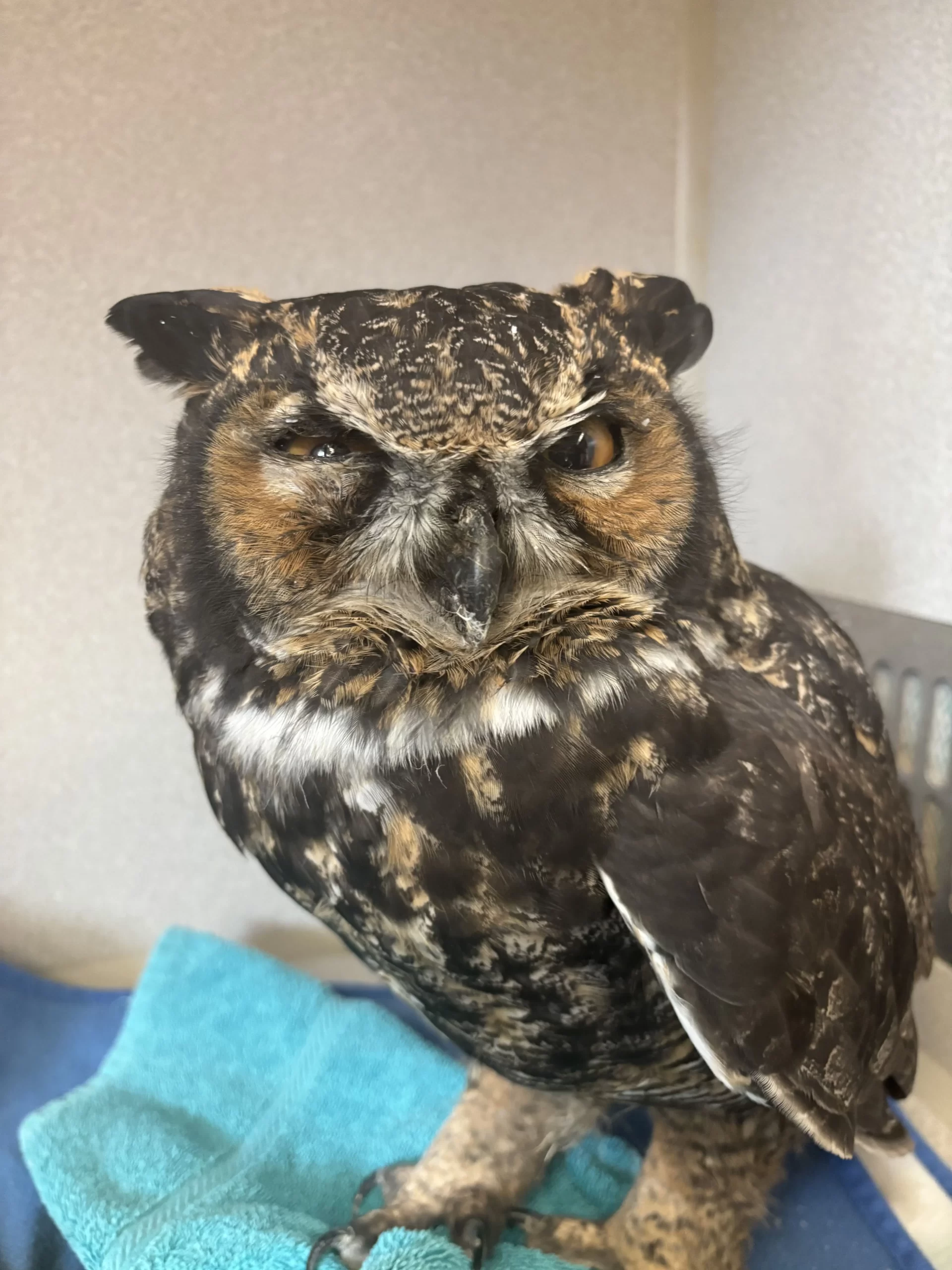
As there was most certainly head trauma, the lights were kept low while we gave them pain medication and encouraged them to eat. During this process they were extremely patient with being handled, prodded, and even picked up in their entirety. The meals they would eat were few and far between, and the rare times that they would flap their wings were when being picked up too briskly. Alongside this, their ability to balance when being picked up or placed down was lacking, often resulting in the bird tumbling when attempting to walk.
When the owl was initially received and the intake examination was concluded, a closer look at their right eye was needed, noting that it was swollen shut upon arrival. After opening the eye to get a brief look, both eyes were responsive to light and continued to be for multiple days in our care. Their right eye became less swollen as the days passed, however the owl kept squinting and their attitude remained dull with continuing signs of pain. Alongside this, the eye itself continued exhibiting changes each day, with signs of haemorrhaging and debris floating in front of the pupil, likely from a tear in the iris. Eventually the right eye lost its ability to react to light, and the owl was taken into another examination with AlpineVet, determining that the eye was now non-visual.
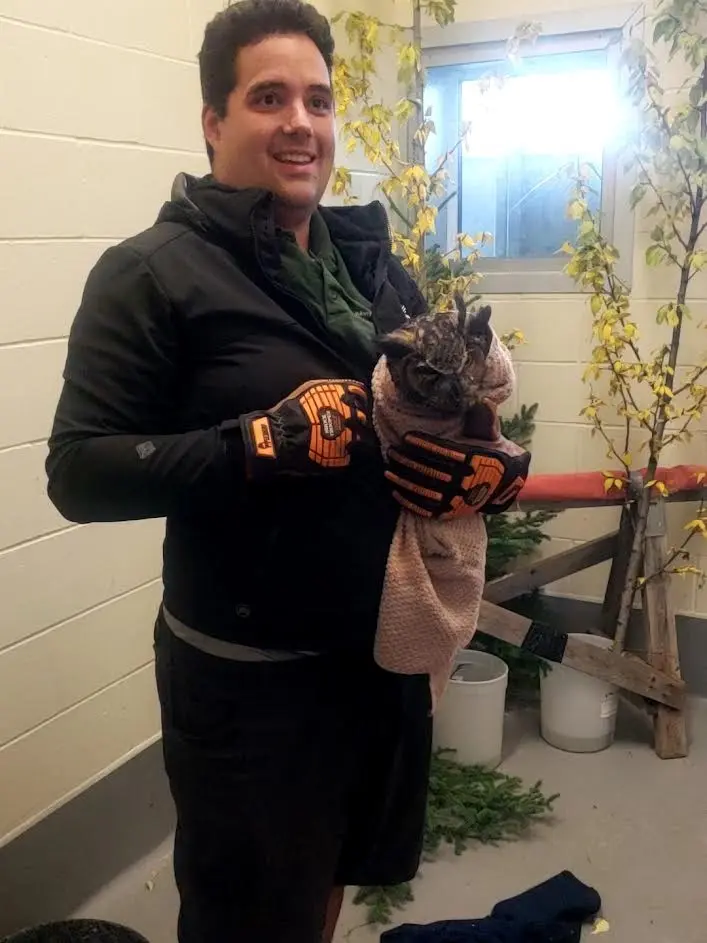
Neil explaining owl handling. Neil teaching the animal care staff how to properly pick up and wrap the owl to minimize injury during handling. Neil, Manager of Education and Programming, has history working in B.C., at an avian rescue centre.
Having concerns about a raptor being released into the wild with a single eye, inhibiting a key sense that they use to hunt, talks of all kinds were happening behind-the-scenes regarding eye surgery and the potential hazards of removing their eye completely.
Eventually, the preserve decided to reach out to experts in the field of raptor rehab in BC, an organization ironically known as OWL. The call we had was extremely informative, and we asked a few questions regarding the owl’s lack of hunger, balance, and whether or not a single-eyed owl could possibly be released successfully.
Their response eased our fears, they have had cases exactly like this one, and not only were owls with one eye common in their rehab center, they were also great candidates for successful release into the wild.
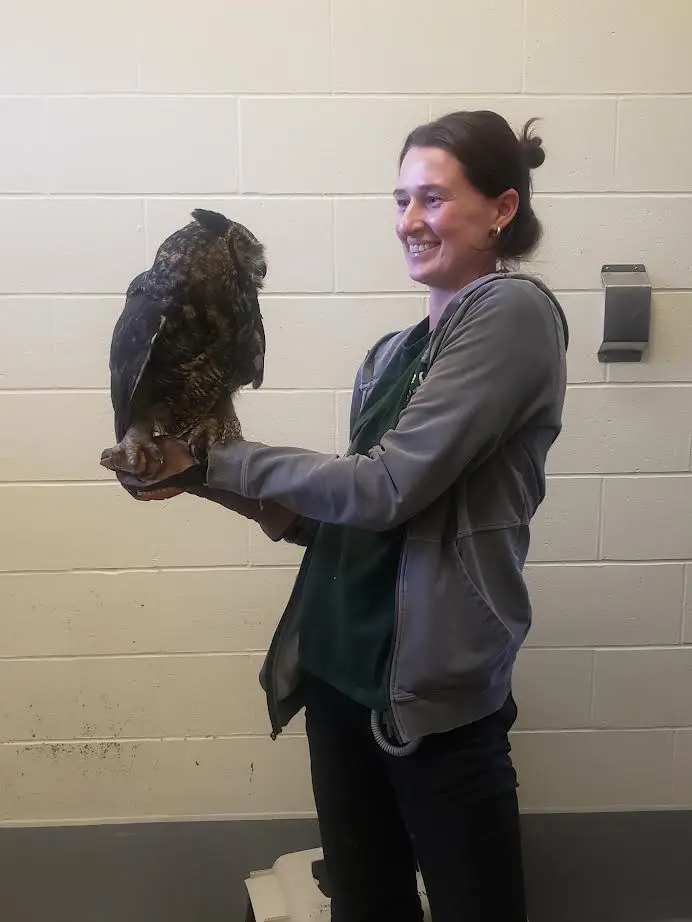
Alexis, Wildlife Care and Rehabilitation Technician and veterinary technician handles the bird during an examination.
For owls struck by vehicles, eyes are commonly injured and need removal; however, through this call we found out that surgery to remove the eye is almost never necessary. Prior to this, we knew of two options for eye surgery that worked for owls: enucleation, the process of completely removing an eyeball from its socket by severing its connections with the brain; and evisceration, where the cornea of the eye and all of its inner contents are removed, leaving the sclera (white, fibrous outer shell of the eye) intact.
In terms of the successful release of an owl back into the wild, evisceration has a better success rate as that surgery minimizes the disruption to the owl’s facial disc. The facial disc of an owl is the concave formation of feathers around their face that directs sounds into their ears, which is what allows them to continue hunting prey in 3D space even when one eye is missing. However, through our call with OWL we learned of a third option for eye removal, simply leaving it.
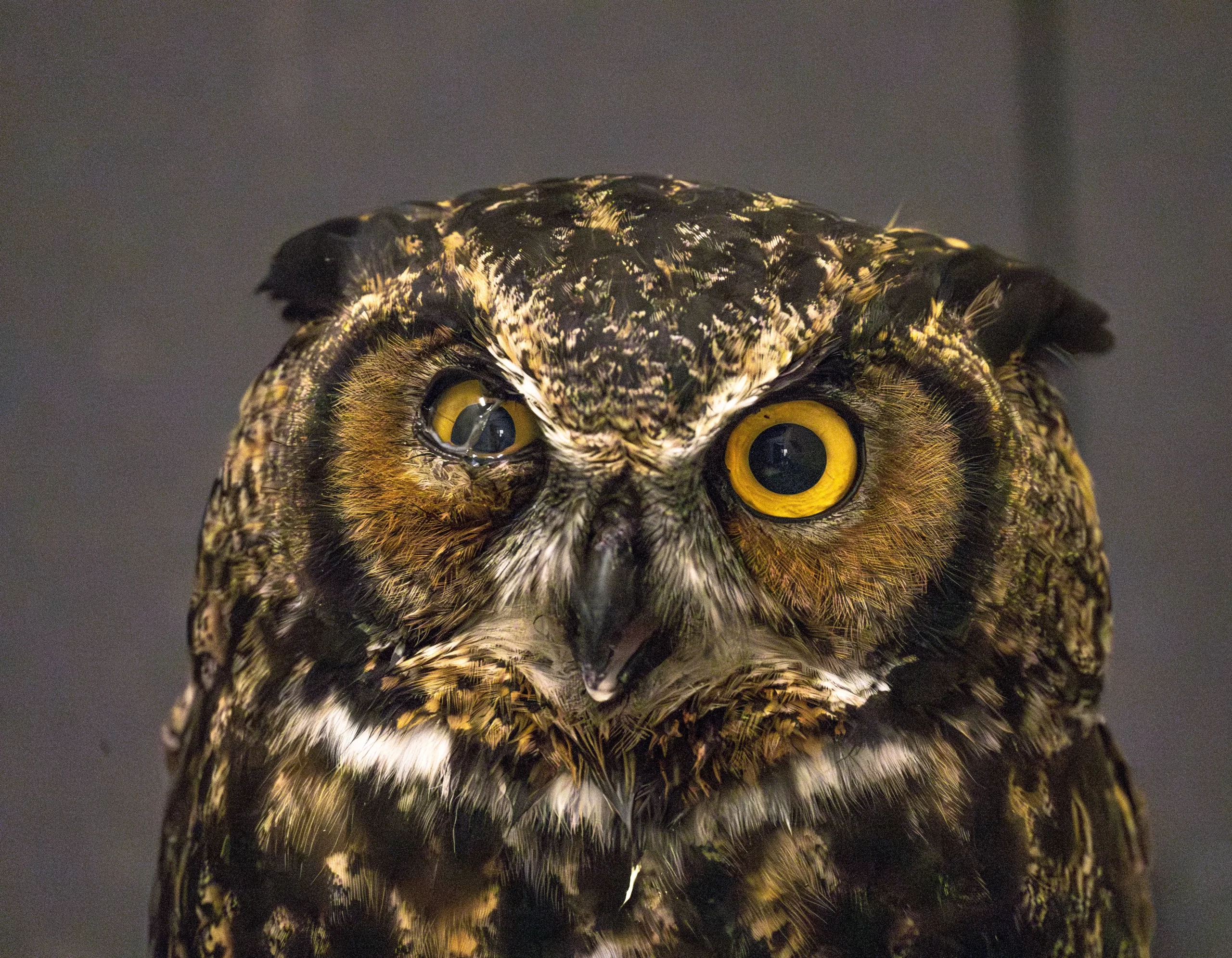
Close up view of the eye 3 weeks after being found and admitted to the centre. Great horned owl, Sept 2025 YWP. Photo Credit: L.Caskenette
Owls are able to allow their damaged eyeball to naturally degrade whilst in its socket, eventually making the orbital empty whilst not disturbing the fragile feathers around the owl’s facial disc. With three options presented to our animal care team for handling this eye-boggling problem, we continue to weigh our options whilst allowing the owl to regain their strength. They have made incredible progress thus far but still need to recover from their injuries, work their flight muscles out, and try hunting live prey before we release them. Of course, plans for rehab always seem easier at the beginning, and many things can go awry; but we will continue to play it by ear as situations arise.
With patience, we hope this owl will recover slowly but surely, gaining their vigour and ferocity back so we can reintroduce them into the wild.
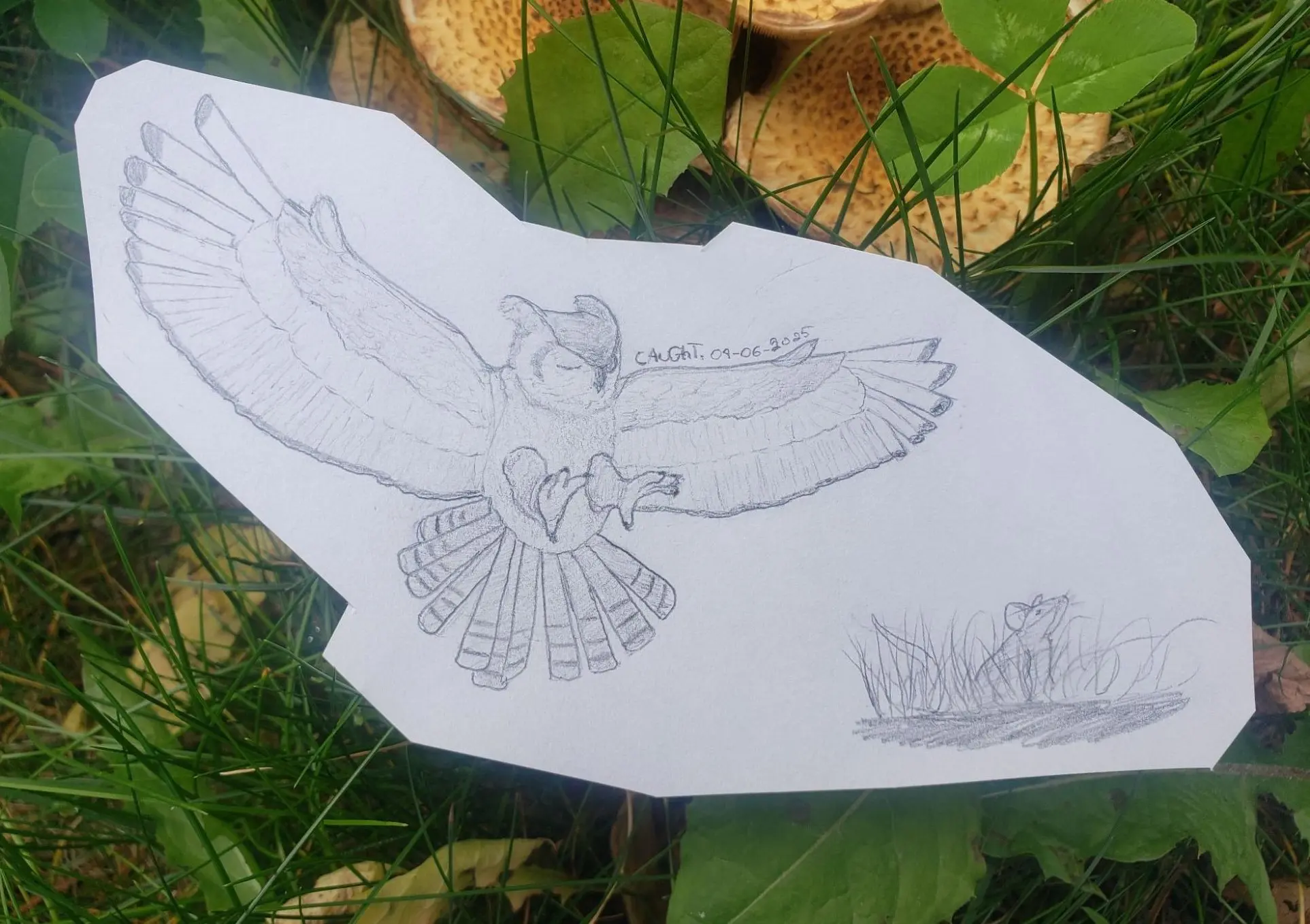
Created by Connor Dennhardt, titled ‘CAuGhT’.
All donations go towards the betterment of our rehab center and animal care team.
There is a comment section below for any thoughts that may have stirred from this story!
Thank you for your patience in reading this post.
Sonya Bingley was travelling the Klondike highway when they noticed an animal on the side of the road. Sonya was able to ensure the bird got the helped it needed. If you come across wildlife you suspect needs help check out what to do here!

Connor Dennhardt
He/Him - Forester Educator
Connor grew up in Thunder Bay Ontario, where he developed an interest in nature and exploring the outdoors. From his adventures, he learned how to thrive in the wilderness and learn to have fun even in the harshest of winters. His passion made him pursue an HBSa in Animal Sciences, where he earned the foundations of biology and found his love of science. His interests eventually led him to study in Svalbard, Norway; where he learned extensive amounts of information about the Arctic from researchers across the globe. From there, he has worked as a researcher within Quetico Provincial Park, a bee farm in Southern Ontario, and now has returned to the north as a Forester/Educator here at the YWP. He knows we aren’t quite in the Arctic, but he’s happy making it that much closer to his true calling.
